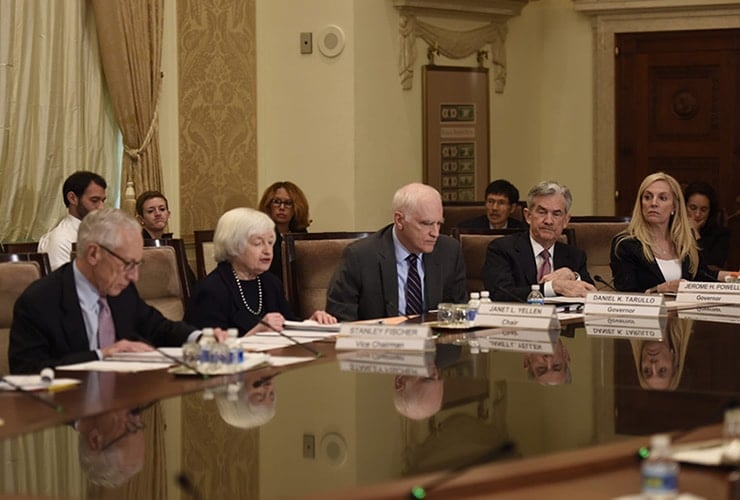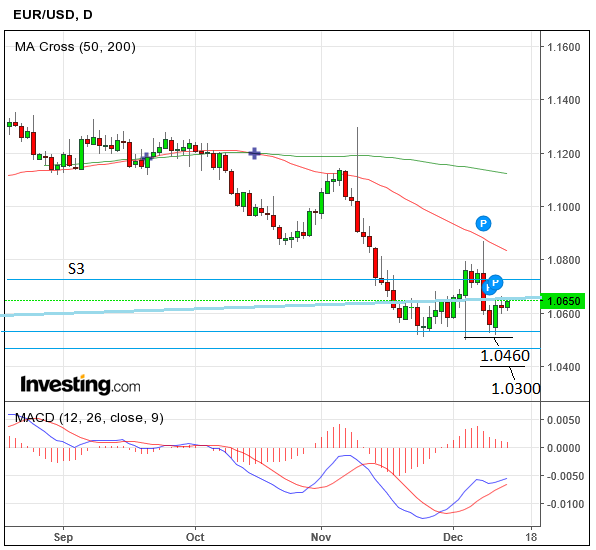The Euro-Dollar Rate: Critical Break-Down Point Confirmed

The Euro is under intense pressure against the Dollar following the suddent realisation that the US Federal Reserve could raise interest rates three times in 2017.
The EUR/USD fell to 14 year lows on the back of sustained US Dollar demand - not even a sharp rise in German yields could steady the shared currency.
The prospect of higher higher yield in the United States has attracted strong inflows of capital from investors which has in turn bid the Dollar higher.
Contrast this scenario to that of the Eurozone where interest rates remain anchored in negative territory and where the European Central Bank threatens further stimulus by way of its Asset Purchase Programme.
This divergence in policy is the fundamental driver of a weaker Euro and on this basis there appears scant reason to bet on any meaningful recovery in EUR/USD.
“The ECB has already decided to extend its QE programme and has therefore turned even more dovish. Thus, the growing divergence of monetary policy stances between the US and Eurozone should keep the pressure on the EUR/USD exchange rate," says Fawad Razaqzada of Forex.com.
EUR/USD is in a strong downtrend with the break below the 1.0503 December 5 lows confirming an extension down to the next target at the 1.0467 March lows, which has since been met.
"EUR/USD has eroded the 1.0467 March low and more importantly closed below here. This represents a critical break down point and we would ideally like to see a weekly close below here," says Karen Jones, a technical strategist with Commerzbank in London.
Jones does however note the 13 counts on the daily chart and the fact that the daily RSI has not confirmed the new low and we may see some consolidation around this zone.
"We look for this to struggle on moves to the 1.0660/80 band and previous lows circa 1.0505/18 will offer initial resistance," says Jones.
Beyond here markets will be targeting 1.00.
"We remain overall negative as last week the market briefly spiked up to 1.0875 and this was viewed as exhaustive price action. The 1.0467 March low is regarded as a major break down point to parity and beyond and we would like to see a weekly close below here," says Jones.
Those with imminent Euro-Dollar payment needs should consider placing stop orders at nearby levels to protect against any further erosion of the exchange rate.
Dollar Demand Forecast to Continue
The strong advance by the US Dollar is indicative of surprise - currencies only move when a new factor has to be accounted for by the price.
The Fed delivered a hawkish surprise; not only did we get a 25bp rate hike as expected, but there was also a modest upward adjustment to the median projected policy path.
The dot plot now signals 3 hikes next year (vs. 2 prior), with an additional hike also factored in to the 2018/19 dots.
For the first time ever, the median “longer run” dot – a guide for the terminal Fed funds rate – was also revised higher, which suggests that the Fed may be in the early stages of endorsing a breakout from the post-crisis secular stagnation woes.
"Yet, this is still a far distant reality and the lack of material upward revision to the real GDP growth profile confirms that there has been no actual shift in the Fed’s core view," says Viraj Patel at ING in London.
Indeed, Chair Yellen noted that it is far too early to factor in any fiscal stimulus given the high degree of policy uncertainty.
"Overall, we can sum up the technical aspects of the Fed meeting in two words: upside skew and given that it’s been a while since we've been able to say that, it is hardly surprisingly to see the broad-based dollar rally," says Patel.
The analyst does also make the point that what we’ve seen has been a classic Fed behind the curve market reaction: bond yields up and stocks down (which is different to the Trumpflation dollar upside seen in the aftermath of the elections).
"Prospects of a Trump fiscal package has added a layer of credibility to the Fed’s hawkish tilt and helps to explain the stronger $ (unlike last year when markets saw the 4 hikes for 2016 as non-credible). The penny will soon drop that the dots are in no means a policy commitment, limiting the degree to which the Fed story can support the $," warns Patel.
But with President Trump (and a possible reflationary fiscal package) around the corner, ING think broad USD upside will continue into 2017.
Eurozone Data Mixed
The latest Eurozone economic reports were mixed. While the German manufacturing PMI report came in stronger than expected at 55.5 vs. 54.6 expected.
Services PMI for Germany came in a tick lower than forecast with a 53.8 vs. 55.0 reading expected.
The German composite PMI was inline with expectations at 54.8. Eurozone manufacturing PMI also had a stronger showing coming in at 54.9 vs. 53.7 expected. Both the services and composite indices were inline.






